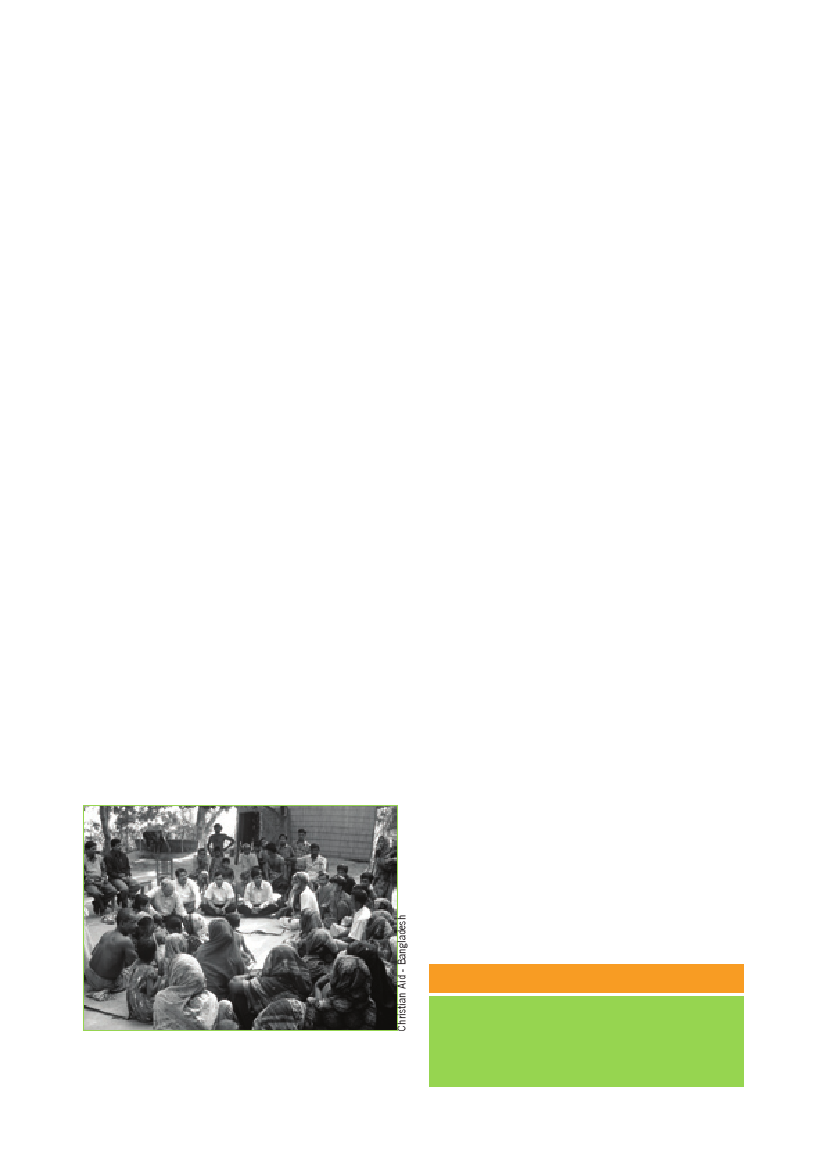
Tools or process? Lessons from attempts at
integration
Many international NGOs are developing new tools and frameworks for understanding and working
towards disaster risk reduction (DRR) and for linking DRR to other development approaches. But is
too much importance attached to conceptual and methodological innovation? Would more emphasis
on improved processes of learning and reflection within organizations be more effective in stimulating
integrated approaches?
Recent work to develop and test a new resource for
understanding and working towards resilience at the
community level, the Characteristics of a Disaster-
Resilient Community, has highlighted the importance
of learning processes in empowering agencies and
communities. Taking the UN’s Hyogo Framework
for Action 2005–2015 as a starting point, it breaks
the concept of disaster resilience down into sets of
themes, components and characteristics that become
progressively more detailed in illustrating what an ideal
‘disaster-resilient community’ might look like. Extensive
feedback from nearly two years of field testing has
informed a second edition, due to be published early in
2010.
A starting point
The Characteristics resource should be viewed as an entry
point to stimulate a process of learning and change.
• It is not a model for every situation.
• It is a resource, not a checklist.
• It stimulates and facilitates discussion.
• It helps users visualize the widest possible range of
options.
• It should be adapted to the context in which used and
to users’ needs and capacities.
• It views resilience-building as a continuing process of
learning and practice.
‘Customizing’ the themes, components and
characteristics to particular contexts is encouraged, to
make them more relevant. They are most useful when
they are selected by those who need to use them, through
participatory processes of discussion and validation at
the local level. In this way, resilience-building becomes a
continuous process of reflection and practice.
Solution-focused
Another key feature of the Characteristics resource is that
it is solution-focused, not problem-driven, emphasizing
capacities over vulnerabilities. In practice, this has
proved to be of great psychological value in creating a
positive attitude amongst users, as this quote from DRR
practitioners in Bangladesh illustrates:
‘Previously, they knew what they wanted to prevent in
a disaster-prone village, but this was turned around so
that they could see what they wanted to achieve.’
Lessons for future practice
Experience with developing the Characteristics points to
important lessons for those working towards integrated
approaches to SLA, DRR and CCA. We should be working
towards a progressive refinement and harmonization of
existing methods, filling knowledge and methodological
gaps, building on existing work by sectors and
programmes, and making links. This should be seen
as an organic process of learning, development and
integration. Efforts should focus not on more tools but
on improving capacity to use them. More attention needs
to be paid to the question of what will be most useful
to people working on the ground. The main demand in
country is for time and space to reflect on the issues
and the different tools available so that they can make
informed choices about how best to use them.
Author
John Twigg
Department of Civil, Environmental and Geomatic
Engineering
University College London
London WC1E 6BT.
Email: j.twigg@ucl.ac.uk
See also
Community meeting during a participatory vulnerability
and capacity assessment carried out in
Manikgonj district, Bangladesh
John Twigg (in press) Characteristics of a Disaster-
Resilient Community: A Guidance Note, 2nd edition,
DFID DRR Interagency Group, available online at
www.proventionconsortium.org/?pageid=90
11